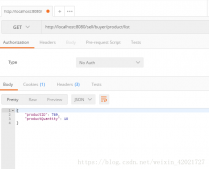缓存要解决的问题:一个程序的瓶颈在于数据库,我们也知道内存的速度是大大快于硬盘的速度的。当我们需要重复地获取相同的数据的时候,我们一次又一次的请求数据库或者远程服务,导致大量的时间耗费在数据库查询或者远程方法调用上,导致程序性能的恶化,这便是数据缓存要解决的问题。
类似的缓存技术有:redis、ehcache、guava等,现在一般常用的为redis。
spring 3.1 引入了激动人心的基于注释(annotation)的缓存(cache)技术,它本质上不是一个具体的缓存实现方案(例如ehcache 或者 oscache),而是一个对缓存使用的抽象,通过在既有代码中添加少量它定义的各种 annotation,即能够达到缓存方法的返回对象的效果。
spring 的缓存技术还具备相当的灵活性,不仅能够使用 spel(spring expression language)来定义缓存的 key 和各种 condition,还提供开箱即用的缓存临时存储方案,也支持和主流的专业缓存例如 ehcache 集成。
其特点总结如下:
1. 通过少量的配置 annotation 注释即可使得既有代码支持缓存
2. 支持开箱即用 out-of-the-box,即不用安装和部署额外第三方组件即可使用缓存
3. 支持 spring express language,能使用对象的任何属性或者方法来定义缓存的 key 和 condition
4. 支持 aspectj,并通过其实现任何方法的缓存支持
5. 支持自定义 key 和自定义缓存管理者,具有相当的灵活性和扩展性
一、spring boot cache原理
第一步、自动配置类;
自动启动类:cacheautoconfiguration
属性配置:cacheproperties
主启动类添加:@enablecaching注解
cache pom添加:
|
1
2
3
4
|
<dependency> <groupid>org.springframework.boot</groupid> <artifactid>spring-boot-starter-cache</artifactid></dependency> |
第二步、从缓存的配置类 中获取 多个cache
cacheconfigurationimportselector.selectimports()方法获取
|
1
2
3
4
5
6
7
8
9
10
11
12
13
|
static class cacheconfigurationimportselector implements importselector { @override public string[] selectimports(annotationmetadata importingclassmetadata) { cachetype[] types = cachetype.values(); string[] imports = new string[types.length]; for (int i = 0; i < types.length; i++) { imports[i] = cacheconfigurations.getconfigurationclass(types[i]); } return imports; }} |
获取结果:simplecacheconfiguration 默认cache
|
1
2
3
4
5
6
7
8
9
10
11
|
org.springframework.boot.autoconfigure.cache.genericcacheconfiguration org.springframework.boot.autoconfigure.cache.jcachecacheconfiguration org.springframework.boot.autoconfigure.cache.ehcachecacheconfiguration org.springframework.boot.autoconfigure.cache.hazelcastcacheconfiguration org.springframework.boot.autoconfigure.cache.infinispancacheconfiguration org.springframework.boot.autoconfigure.cache.couchbasecacheconfiguration org.springframework.boot.autoconfigure.cache.rediscacheconfiguration org.springframework.boot.autoconfigure.cache.caffeinecacheconfiguration org.springframework.boot.autoconfigure.cache.guavacacheconfiguration org.springframework.boot.autoconfigure.cache.simplecacheconfiguration【默认】 org.springframework.boot.autoconfigure.cache.noopcacheconfiguration |
第三步:simplecacheconfiguration.cachemanager()
此方法中给容器中注册了一个cachemanager组件:类型为concurrentmapcachemanager
|
1
2
3
4
5
6
7
8
9
|
@beanpublic concurrentmapcachemanager cachemanager() { concurrentmapcachemanager cachemanager = new concurrentmapcachemanager(); list<string> cachenames = this.cacheproperties.getcachenames(); if (!cachenames.isempty()) { cachemanager.setcachenames(cachenames); } return this.customizerinvoker.customize(cachemanager);} |
第四步:查看获取缓存方法getcache()
concurrentmapcachemanager 类里,数据都存储到为concurrentmap 中
|
1
2
3
4
5
6
7
8
9
10
11
12
13
14
|
public cache getcache(string name) { cache cache = this.cachemap.get(name); //cachemap 为concurrentmap 类型,获取一个cache组件 if (cache == null && this.dynamic) { synchronized (this.cachemap) { cache = this.cachemap.get(name); //cahcemap不为空获取 if (cache == null) { //可以获取或者创建concurrentmapcache类型的缓存组件;他的作用将数据保存在concurrentmap中; cache = createconcurrentmapcache(name); this.cachemap.put(name, cache); //concurrentmapcache.lookup(); } } } return cache;} |
二、cacheable运行流程:
@cacheable: 1、方法运行之前,先去查询cache(缓存组件),按照cachenames指定的名字获取; (cachemanager先获取相应的缓存),第一次获取缓存如果没有cache组件会自动创建。 2、去cache中查找缓存的内容(concurrentmapcache.lookup()方法中去查找),使用一个key,默认就是方法的参数; key是按照某种策略生成的;默认是使用keygenerator生成的,默认使用simplekeygenerator生成key; simplekeygenerator生成key的默认策略; 如果没有参数;key=new simplekey(); 如果有一个参数:key=参数的值 如果有多个参数:key=new simplekey(params);
|
1
2
3
4
5
6
7
8
9
10
11
12
13
|
//这个方法 simplekeygenerator.generatekey() 方法生成keypublic static object generatekey(object... params) { if (params.length == 0) { return simplekey.empty; } if (params.length == 1) { //如果只有一个参数,直接返回这个参数为key object param = params[0]; if (param != null && !param.getclass().isarray()) { return param; } } return new simplekey(params);} |
3、没有查到缓存就调用目标方法; 4、将目标方法返回的结果,放进缓存中concurrentmapcache.put();
@cacheable标注的方法执行之前先来检查缓存中有没有这个数据,默认按照参数的值作为key去查询缓存, 如果没有就运行方法并将结果放入缓存;以后再来调用就可以直接使用缓存中的数据;
核心: 1)、使用cachemanager【concurrentmapcachemanager】按照名字得到cache【concurrentmapcache】组件 2)、key使用keygenerator生成的,默认是simplekeygenerator
详细执行流程:concurrentmapcache.lookup()上断点查看,执行过程
|
1
2
3
4
5
6
7
8
9
10
11
12
13
14
15
16
17
18
19
20
21
22
23
24
25
26
27
28
29
30
31
32
33
34
|
//第一步cacheaspectsupport 中execute()private object execute(final cacheoperationinvoker invoker, method method, cacheoperationcontexts contexts) //第二步 cacheaspectsupportprivate cache.valuewrapper findcacheditem(collection<cacheoperationcontext> contexts) { object result = cacheoperationexpressionevaluator.no_result; for (cacheoperationcontext context : contexts) { if (isconditionpassing(context, result)) { object key = generatekey(context, result); //获取key cache.valuewrapper cached = findincaches(context, key); if (cached != null) { return cached; } else { if (logger.istraceenabled()) { logger.trace("no cache entry for key '" + key + "' in cache(s) " + context.getcachenames()); } } } } return null;}//第三步:cacheaspectsupport.findincaches()//第四步:abstractcacheinvoker.doget()//第五步:abstractvalueadaptingcache.get();@overridepublic valuewrapper get(object key) { object value = lookup(key); return tovaluewrapper(value);}// 第六步:concurrentmapcache.lookup(); 从concurrentmap 中根据key获取值@overrideprotected object lookup(object key) { return this.store.get(key);} |
三、cacheable 注解的几个属性:
1、cachenames/value:指定缓存组件的名字;将方法的返回结果放在哪个缓存中,是数组的方式,可以指定 多个缓存;
2、key:缓存数据使用的key;可以用它来指定。默认是使用方法参数的值 1-方法的返回值
编写spel; #i d;参数id的值 #a0 #p0 #root.args[0]
getemp[2]
3、keygenerator:key的生成器;可以自己指定key的生成器的组件id
key/keygenerator:二选一使用;
4、cachemanager:指定缓存管理器;或者cacheresolver指定获取解析器
5、condition:指定符合条件的情况下才缓存;
,condition = "#id>0"
condition = "#a0>1":第一个参数的值》1的时候才进行缓存
6、unless:否定缓存;当unless指定的条件为true,方法的返回值就不会被缓存;可以获取到结果进行判断
unless = "#result == null"
unless = "#a0==2":如果第一个参数的值是2,结果不缓存;
7、sync:是否使用异步模式;异步模式的情况下unless不支持
四、cache使用:
1.cacheable的使用
|
1
2
3
4
5
6
|
@cacheable(value = {"emp"}/*,keygenerator = "mykeygenerator",condition = "#a0>1",unless = "#a0==2"*/)public employee getemp(integer id){ system.out.println("查询"+id+"号员工"); employee emp = employeemapper.getempbyid(id); return emp;} |
2.自定义keygenerator:
|
1
2
3
4
5
6
7
8
9
10
|
@bean("mykeygenerator")public keygenerator keygenerator(){ return new keygenerator(){ @override public object generate(object target, method method, object... params) { return method.getname()+"["+ arrays.aslist(params).tostring()+"]"; } };} |
3.cacheput的使用:更新缓存
|
1
2
3
4
5
6
7
8
9
10
11
12
13
14
15
16
17
18
19
20
21
22
23
24
25
26
27
28
|
/** * @cacheput:既调用方法,又更新缓存数据;同步更新缓存 * 修改了数据库的某个数据,同时更新缓存; * 运行时机: * 1、先调用目标方法 * 2、将目标方法的结果缓存起来 * * 测试步骤: * 1、查询1号员工;查到的结果会放在缓存中; * key:1 value:lastname:张三 * 2、以后查询还是之前的结果 * 3、更新1号员工;【lastname:zhangsan;gender:0】 * 将方法的返回值也放进缓存了; * key:传入的employee对象 值:返回的employee对象; * 4、查询1号员工? * 应该是更新后的员工; * key = "#employee.id":使用传入的参数的员工id; * key = "#result.id":使用返回后的id * @cacheable的key是不能用#result * 为什么是没更新前的?【1号员工没有在缓存中更新】 * */ @cacheput(value = "emp",key = "#result.id") public employee updateemp(employee employee){ system.out.println("updateemp:"+employee); employeemapper.updateemp(employee); return employee; } |
4.cacheevict 缓存清除
|
1
2
3
4
5
6
7
8
9
10
11
12
13
14
15
16
17
18
|
/** * @cacheevict:缓存清除 * key:指定要清除的数据 * allentries = true:指定清除这个缓存中所有的数据 * beforeinvocation = false:缓存的清除是否在方法之前执行 * 默认代表缓存清除操作是在方法执行之后执行;如果出现异常缓存就不会清除 * * beforeinvocation = true: * 代表清除缓存操作是在方法运行之前执行,无论方法是否出现异常,缓存都清除 * * */@cacheevict(value="emp",beforeinvocation = true,key = "#id")public void deleteemp(integer id){ system.out.println("deleteemp:"+id); //employeemapper.deleteempbyid(id); int i = 10/0;} |
5.caching 复杂配置
|
1
2
3
4
5
6
7
8
9
10
11
12
13
|
// @caching 定义复杂的缓存规则@caching( cacheable = { @cacheable(/*value="emp",*/key = "#lastname") }, put = { @cacheput(/*value="emp",*/key = "#result.id"), @cacheput(/*value="emp",*/key = "#result.email") })public employee getempbylastname(string lastname){ return employeemapper.getempbylastname(lastname);} |
6.cacheconfig缓存清除
|
1
2
3
|
@cacheconfig(cachenames="emp",cachemanager = "employeecachemanager") //抽取缓存的公共配置@servicepublic class employeeservice { |
以上就是本文的全部内容,希望对大家的学习有所帮助,也希望大家多多支持服务器之家。
原文链接:https://blog.csdn.net/yangliuhbhd/article/details/80626468














